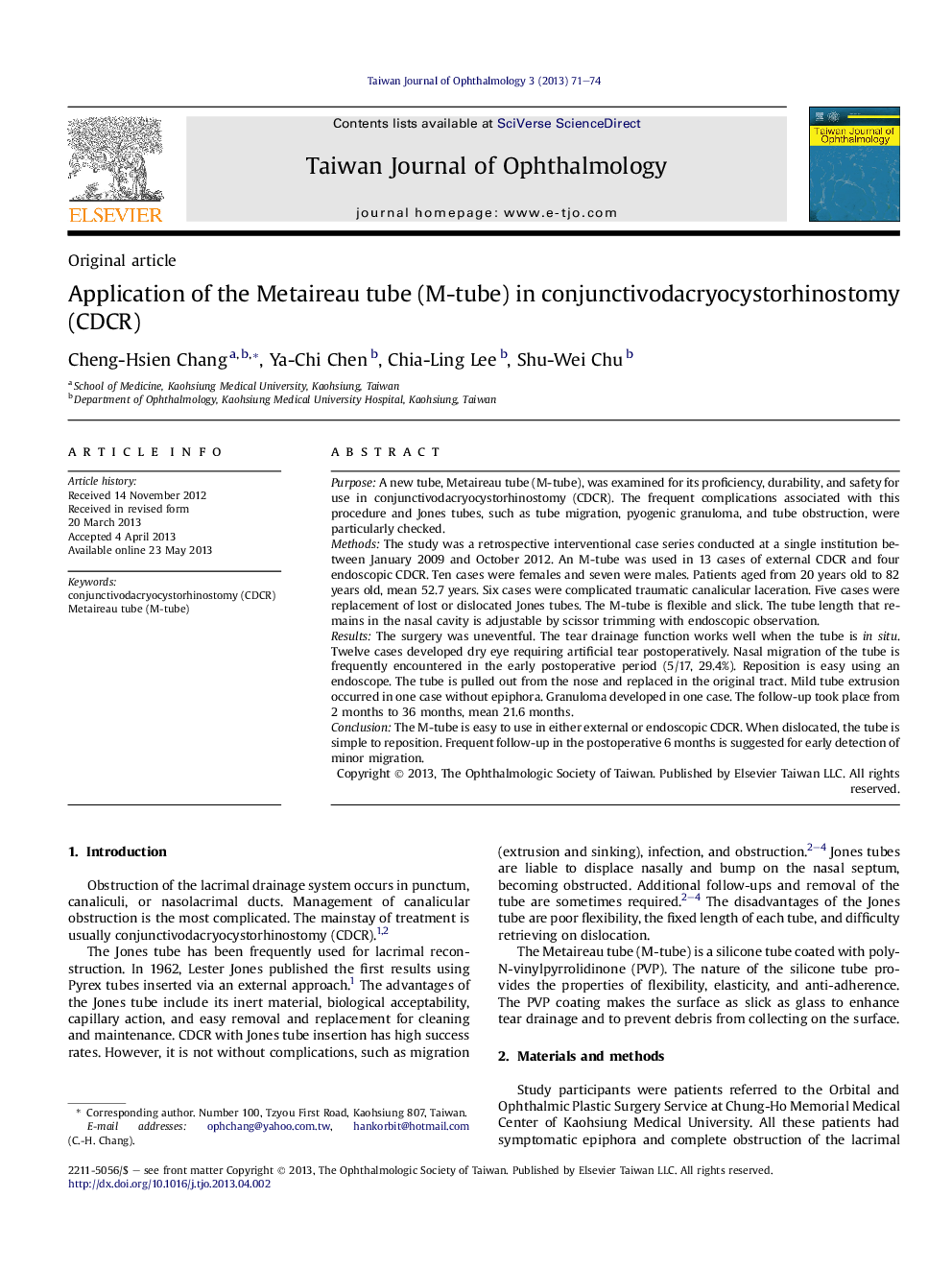| Article ID | Journal | Published Year | Pages | File Type |
|---|---|---|---|---|
| 4033486 | Taiwan Journal of Ophthalmology | 2013 | 4 Pages |
PurposeA new tube, Metaireau tube (M-tube), was examined for its proficiency, durability, and safety for use in conjunctivodacryocystorhinostomy (CDCR). The frequent complications associated with this procedure and Jones tubes, such as tube migration, pyogenic granuloma, and tube obstruction, were particularly checked.MethodsThe study was a retrospective interventional case series conducted at a single institution between January 2009 and October 2012. An M-tube was used in 13 cases of external CDCR and four endoscopic CDCR. Ten cases were females and seven were males. Patients aged from 20 years old to 82 years old, mean 52.7 years. Six cases were complicated traumatic canalicular laceration. Five cases were replacement of lost or dislocated Jones tubes. The M-tube is flexible and slick. The tube length that remains in the nasal cavity is adjustable by scissor trimming with endoscopic observation.ResultsThe surgery was uneventful. The tear drainage function works well when the tube is in situ. Twelve cases developed dry eye requiring artificial tear postoperatively. Nasal migration of the tube is frequently encountered in the early postoperative period (5/17, 29.4%). Reposition is easy using an endoscope. The tube is pulled out from the nose and replaced in the original tract. Mild tube extrusion occurred in one case without epiphora. Granuloma developed in one case. The follow-up took place from 2 months to 36 months, mean 21.6 months.ConclusionThe M-tube is easy to use in either external or endoscopic CDCR. When dislocated, the tube is simple to reposition. Frequent follow-up in the postoperative 6 months is suggested for early detection of minor migration.
